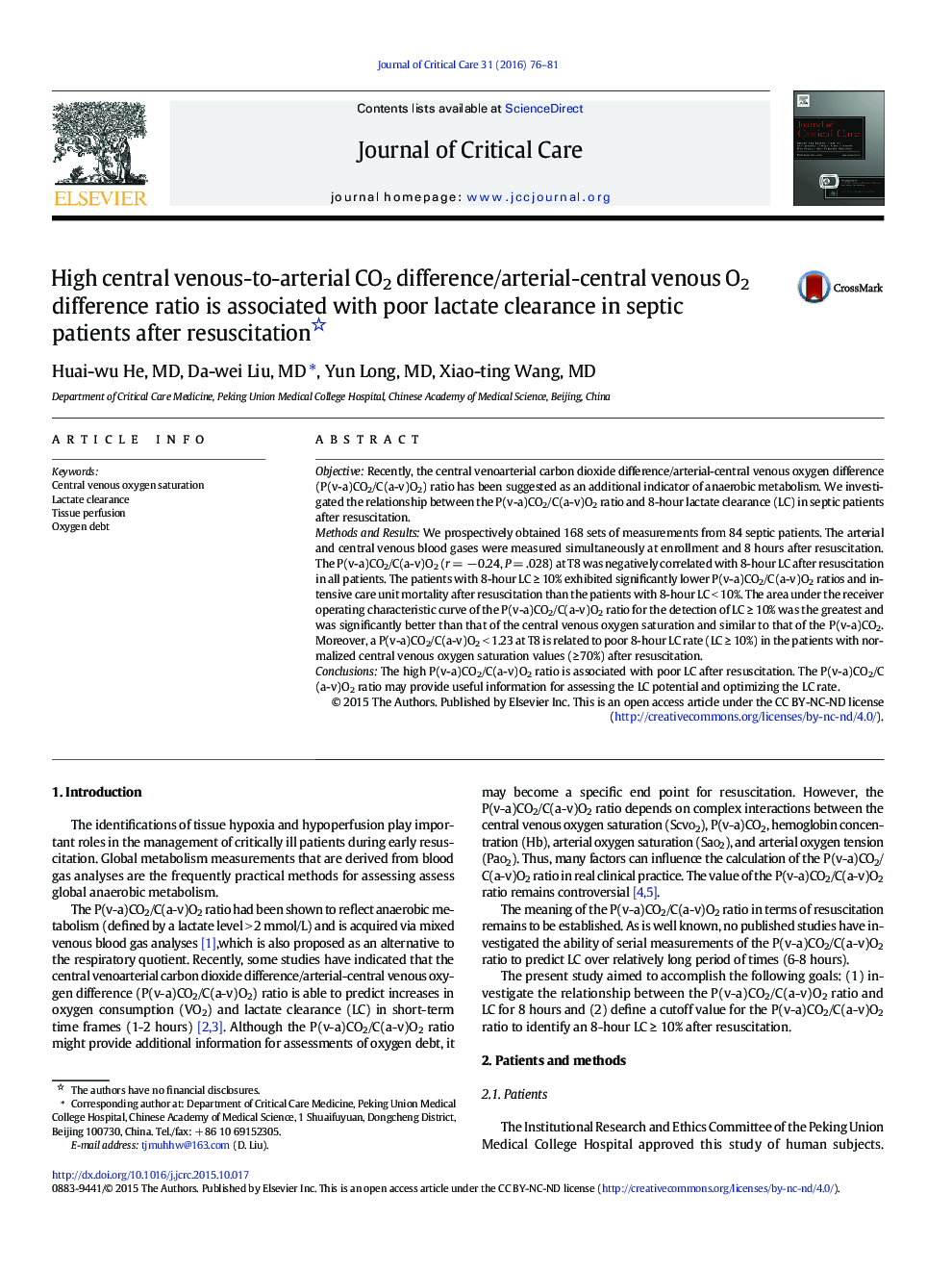| Article ID | Journal | Published Year | Pages | File Type |
|---|---|---|---|---|
| 5885027 | Journal of Critical Care | 2016 | 6 Pages |
ObjectiveRecently, the central venoarterial carbon dioxide difference/arterial-central venous oxygen difference (P(v-a)CO2/C(a-v)O2) ratio has been suggested as an additional indicator of anaerobic metabolism. We investigated the relationship between the P(v-a)CO2/C(a-v)O2 ratio and 8-hour lactate clearance (LC) in septic patients after resuscitation.Methods and ResultsWe prospectively obtained 168 sets of measurements from 84 septic patients. The arterial and central venous blood gases were measured simultaneously at enrollment and 8 hours after resuscitation. The P(v-a)CO2/C(a-v)O2 (r = â 0.24, P = .028) at T8 was negatively correlated with 8-hour LC after resuscitation in all patients. The patients with 8-hour LC ⥠10% exhibited significantly lower P(v-a)CO2/C(a-v)O2 ratios and intensive care unit mortality after resuscitation than the patients with 8-hour LC < 10%. The area under the receiver operating characteristic curve of the P(v-a)CO2/C(a-v)O2 ratio for the detection of LC ⥠10% was the greatest and was significantly better than that of the central venous oxygen saturation and similar to that of the P(v-a)CO2. Moreover, a P(v-a)CO2/C(a-v)O2 < 1.23 at T8 is related to poor 8-hour LC rate (LC ⥠10%) in the patients with normalized central venous oxygen saturation values (â¥Â 70%) after resuscitation.ConclusionsThe high P(v-a)CO2/C(a-v)O2 ratio is associated with poor LC after resuscitation. The P(v-a)CO2/C(a-v)O2 ratio may provide useful information for assessing the LC potential and optimizing the LC rate.
